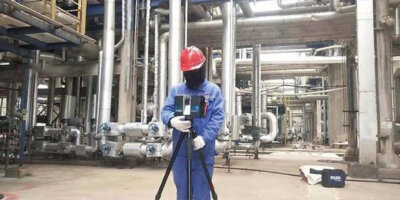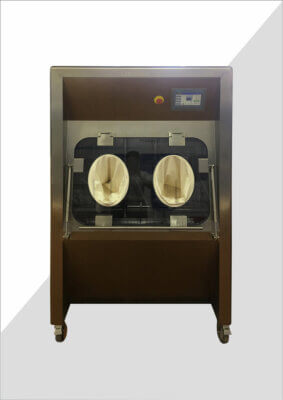Effluent filters play a crucial role in wastewater treatment systems, acting as the last line of defense against solid particles entering the drain field. Proper maintenance of these filters is essential for the longevity and efficiency of septic systems. This article will guide you through the process of cleaning an effluent filter, ensuring optimal performance and preventing potential issues.
As homeowners and facility managers, understanding the importance of a clean effluent filter is vital. Regular cleaning not only extends the life of your septic system but also helps avoid costly repairs and environmental hazards. We'll explore the steps involved in cleaning an effluent filter, the necessary tools, and best practices to maintain a healthy wastewater treatment system.
Before we delve into the specifics, it's important to note that while cleaning an effluent filter may seem daunting, it's a manageable task that can be performed with the right knowledge and precautions. This article will provide you with comprehensive information on how to clean your effluent filter effectively, ensuring your septic system operates at peak performance.
Proper maintenance of effluent filters can extend the life of a septic system by up to 50% and reduce the risk of drain field failure by 90%.
Why is Cleaning Your Effluent Filter Important?
The effluent filter is a critical component of your septic system, designed to prevent solid waste from entering the drain field. Over time, these filters can become clogged with debris, reducing their effectiveness and potentially leading to system failures. Regular cleaning is essential to maintain the filter's performance and protect your septic system's overall health.
Cleaning your effluent filter offers several benefits:
- Prevents clogging of the drain field
- Extends the life of your septic system
- Reduces the risk of costly repairs
- Ensures efficient wastewater treatment
- Protects groundwater from contamination
Studies show that regular effluent filter cleaning can reduce the frequency of septic system pumping by up to 30%, resulting in significant long-term cost savings.
How Often Should You Clean Your Effluent Filter?
The frequency of cleaning your effluent filter depends on several factors, including the size of your household, water usage, and the age of your septic system. As a general rule, it's recommended to clean your effluent filter at least once a year. However, some systems may require more frequent cleaning.
| Household Size | Recommended Cleaning Frequency |
|---|---|
| 1-2 people | Every 12-18 months |
| 3-4 people | Every 9-12 months |
| 5+ people | Every 6-9 months |
It's important to note that these are general guidelines, and your specific needs may vary. Consulting with a professional septic service provider can help determine the ideal cleaning schedule for your system.
What Tools Do You Need to Clean an Effluent Filter?
Before you begin the cleaning process, it's essential to gather the necessary tools and equipment. Having everything on hand will make the task more efficient and help ensure your safety throughout the process.
Here's a list of items you'll need:
- Protective gloves (rubber or disposable)
- Eye protection
- Face mask
- Long-handled brush or hose
- Bucket
- Garden hose with spray nozzle
- Disinfectant solution
- Trash bags for disposal
| Tool | Purpose |
|---|---|
| Protective gloves | Prevent contact with harmful bacteria |
| Eye protection | Shield eyes from splashes |
| Face mask | Protect against fumes and bacteria |
| Long-handled brush | Scrub filter without direct contact |
| Bucket | Collect debris and wastewater |
| Garden hose | Rinse filter thoroughly |
| Disinfectant solution | Sanitize filter and surrounding area |
| Trash bags | Dispose of waste safely |
Using proper protective equipment when cleaning an effluent filter can reduce the risk of exposure to harmful bacteria by up to 99%.
How Do You Locate Your Effluent Filter?
Before you can clean your effluent filter, you need to know where it's located. The filter is typically found at the outlet of your septic tank, where wastewater exits to the drain field. In most systems, this is near the second compartment of the tank.
To locate your effluent filter:
- Identify your septic tank's location on your property
- Look for the access port or riser closest to the outlet side of the tank
- Remove the lid carefully, following proper safety precautions
If you're unsure about the location of your effluent filter or have difficulty accessing it, it's best to consult a professional septic service provider. They can help you locate the filter and provide guidance on safe access procedures.
| Common Filter Locations | Typical Access Method |
|---|---|
| Outlet baffle | Remove tank lid |
| Separate housing | Open dedicated access port |
| Pump tank | Access through riser |
Properly locating and accessing your effluent filter can save up to 2 hours of unnecessary digging and reduce the risk of damaging your septic system components.
What's the Step-by-Step Process for Cleaning an Effluent Filter?
Cleaning an effluent filter involves several steps that should be followed carefully to ensure thorough cleaning and maintain safety. Here's a detailed guide on how to clean your effluent filter:
- Put on your protective gear (gloves, eye protection, and face mask)
- Carefully remove the filter from its housing
- Hold the filter over a bucket to catch any debris
- Use a garden hose to spray the filter, removing accumulated solids
- If necessary, use a long-handled brush to scrub stubborn debris
- Continue rinsing until the water runs clear
- Inspect the filter for any damage or wear
- Replace the filter in its housing, ensuring it's properly seated
- Close the access port securely
Throughout this process, it's crucial to avoid allowing any debris to fall back into the septic tank. This could reintroduce solids into the system, potentially causing issues in the drain field.
| Step | Key Point |
|---|---|
| Remove filter | Handle carefully to avoid spills |
| Rinse filter | Use high-pressure spray for efficiency |
| Inspect filter | Look for cracks or damage |
| Replace filter | Ensure proper orientation and fit |
Properly cleaning an effluent filter can remove up to 98% of accumulated solids, significantly improving the filter's effectiveness and extending its lifespan.
What Precautions Should You Take When Cleaning an Effluent Filter?
Safety should be your top priority when cleaning an effluent filter. The process involves exposure to potentially harmful bacteria and gases, so taking proper precautions is essential. Here are some key safety measures to keep in mind:
- Always wear appropriate protective gear
- Work in a well-ventilated area to avoid inhaling harmful gases
- Avoid touching your face or mouth during the cleaning process
- Wash your hands thoroughly with soap and water after cleaning
- Dispose of any waste material properly in sealed bags
- Clean and disinfect all tools used in the process
It's also important to be aware of the potential risks associated with accessing your septic tank. Never enter the tank, as it contains dangerous gases that can be lethal. If you encounter any difficulties or feel unsafe at any point, stop the process and contact a professional septic service provider.
| Precaution | Reason |
|---|---|
| Wear protective gear | Prevents contact with harmful bacteria |
| Work in ventilated area | Reduces exposure to toxic gases |
| Proper hand hygiene | Minimizes risk of infection |
| Professional assistance | Ensures safety in complex situations |
Following proper safety precautions when cleaning an effluent filter can reduce the risk of bacterial infection by up to 95% and prevent potentially life-threatening exposure to toxic gases.
How Can You Maintain Your Effluent Filter Between Cleanings?
While regular cleaning is essential, there are steps you can take to maintain your effluent filter between cleaning sessions. These practices can help extend the time between cleanings and improve the overall performance of your septic system:
- Conserve water to reduce the load on your septic system
- Avoid flushing non-biodegradable items down toilets or drains
- Use septic-safe cleaning products in your home
- Schedule regular septic tank inspections
- Be mindful of what goes down your drains, especially in the kitchen
Implementing these practices can significantly reduce the strain on your effluent filter and entire septic system, leading to better performance and fewer maintenance issues.
| Maintenance Practice | Benefit |
|---|---|
| Water conservation | Reduces system load |
| Proper waste disposal | Prevents clogging |
| Septic-safe products | Maintains bacterial balance |
| Regular inspections | Identifies issues early |
Implementing proper maintenance practices can reduce the frequency of effluent filter cleaning by up to 40% and extend the overall lifespan of your septic system by 5-10 years.
When Should You Consider Replacing Your Effluent Filter?
While regular cleaning can extend the life of your effluent filter, there may come a time when replacement is necessary. Here are some signs that indicate it might be time to replace your effluent filter:
- Visible cracks or damage to the filter
- Persistent clogging despite regular cleaning
- Foul odors coming from the septic system
- Slow draining or backing up of fixtures
- The filter has been in use for more than 5-7 years
If you notice any of these signs, it's best to consult with a professional septic service provider. They can assess the condition of your filter and recommend whether cleaning or replacement is the best course of action.
| Sign | Potential Implication |
|---|---|
| Visible damage | Compromised filtration |
| Persistent clogging | Reduced efficiency |
| Foul odors | System malfunction |
| Slow draining | Possible blockage |
| Age of filter | Natural wear and tear |
Timely replacement of a worn effluent filter can prevent up to 70% of potential drain field failures, saving homeowners thousands of dollars in repair costs.
In conclusion, maintaining a clean effluent filter is crucial for the health and longevity of your septic system. Regular cleaning, coupled with proper maintenance practices, can significantly reduce the risk of system failures and costly repairs. By following the steps outlined in this article and being mindful of your septic system's needs, you can ensure efficient wastewater treatment and protect both your property and the environment.
For those seeking advanced solutions in wastewater treatment, 'QUALIA's Effluent Decontamination System (EDS) offers state-of-the-art technology for BSL-2, 3, and 4 liquid waste management. This system provides an additional layer of protection and efficiency in handling complex wastewater challenges.
Remember, when in doubt, always consult with a professional septic service provider. They can offer expert advice tailored to your specific system and help you maintain a healthy, efficient septic system for years to come.
External Resources
How to Clean a Septic Tank Filter – This article provides a comprehensive guide on cleaning a septic tank filter, including how to locate the filter, the importance of cleaning it, and the steps involved in the cleaning process.
Septic Tank Filter Cleaning – YouTube – A video tutorial that demonstrates how to clean a septic tank effluent filter, including tools needed and step-by-step instructions.
Your Septic System and Effluent Filter – A detailed PDF guide from Ho-Chunk Health that explains the purpose of the effluent filter, maintenance procedures, and tips to avoid damaging the drainfield during cleaning.
How to Clean a Septic Tank Filter – YouTube – Another video tutorial that shows how to remove and clean the plastic filter at the discharge pipe of a septic tank.
How to clean your pre-treatment (septic) tank's effluent filter – YouTube – A video guide that explains the process of cleaning the effluent filter in a septic tank, emphasizing the importance of regular maintenance.
Septic Tank Maintenance: How to Clean Your Effluent Filter – An article from a septic maintenance service that outlines the steps and best practices for cleaning the effluent filter, including inspection tips and maintenance schedules.
Cleaning Your Septic System's Effluent Filter – A resource from the EPA that discusses the importance of cleaning the effluent filter, how often it should be done, and the potential consequences of neglecting this maintenance task.
Septic System Care: Cleaning the Effluent Filter – An informational page from the Minnesota Department of Health that provides guidelines on how to clean the effluent filter, along with general tips for maintaining a healthy septic system.
Related Contents:
- Continuous Effluent Decontamination: Protecting Our Environment
- Effluent Decontamination: Safeguarding Our Environment
- Effluent Decontamination Systems for Biosafety Laboratories
- Decontamination Cleaning: Ensuring Safety Through Thorough Sanitization
- Decontamination Systems: Safeguarding Health and Environment
- Enhancing Facility Safety with Bag In Bag Out (BIBO) Systems: A Comprehensive Overview
- Bag In Bag Out Filters: The Ultimate Guide to Safe and Efficient Filter Replacement
- Water Decontamination: Essential Methods for Clean, Safe Water
- The Ultimate Guide to QUALIA’s Bag-in Bag-out (BIBO) System: Ensuring Safety and Efficiency in Hazardous Environments





























